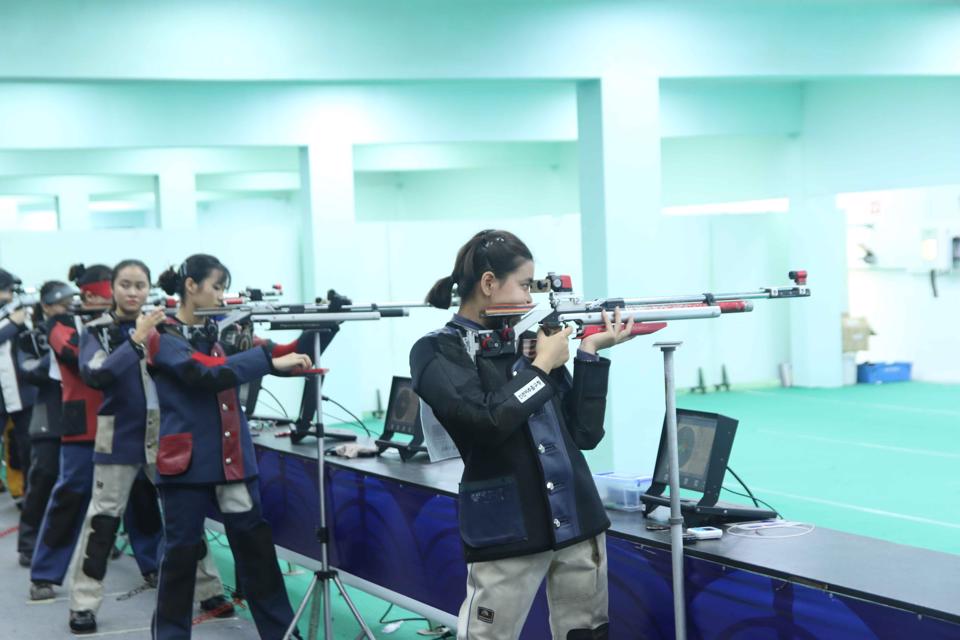This is one of the contents stipulated in the Draft Circular on environmental monitoring activities recently finalized by the Ministry of Natural Resources and Environment and currently open for public comment.
Currently, environmental issues are a topical concern that needs attention not only in developed countries but also in developing countries, which are pursuing the goal of sustainable development balancing the environment and the economy.
According to the Law on Environmental Protection 2014, Environmental Monitoring is the process of systematically tracking environmental components and factors affecting the environment to provide information for assessing the current state, quality trends, and negative impacts on the environment.
In layman's terms, monitoring refers to activities using professional measures to "examine" the environment to see its condition. Environmental monitoring is generally stipulated by seven Articles (Articles 121 to 127) in the Law on Environmental Protection. However, these regulations appear to be very rudimentary and lack specific guidance, so periodic environmental monitoring remains largely theoretical.
Recently, the Ministry of Natural Resources and Environment has completed a Draft Circular on environmental monitoring activities, which is currently in the consultation stage for comments. The Draft Circular comprises 40 Articles and 13 Appendices. The Draft Circular specifically stipulates: "technical procedures for environmental monitoring; basic requirements and technical characteristics of automatic, continuous air monitoring stations; use of technical means and equipment in environmental monitoring activities; and transmission and connection of data from automatic, continuous environmental monitoring stations."
Frequency of Environmental Monitoring Each Year:
The frequency of environmental monitoring is conducted annually, stipulated for the first time in the Draft. The monitoring frequency for each specific environment is as follows:
- Air quality monitoring: at least 6 times/year.- Noise and vibration monitoring: at least 4 times/year.- Surface water quality monitoring: at least 6 times/year.- Groundwater monitoring:- Coastal seawater: at least once per quarter;- Nearshore and offshore seawater: at least twice/year.- Rainwater quality monitoring: The Draft does not specify the frequency but requires sampling with each rainfall.- Soil environment monitoring:- For slow-variable parameters: monitoring at least once every 3-5 years;- For fast-variable parameters: monitoring at least once/year.- Sediment monitoring: at least once/year.
The Draft demonstrates that the Ministry of Natural Resources and Environment has taken positive actions by issuing a fairly comprehensive and detailed draft for environmental monitoring activities.
For example, regarding noise monitoring, the draft specifies: Noise monitoring equipment should meet national standard TCVN 5964:1995; Methods and monitoring intervals should follow national standard TCVN 7878:2008; When conducting outdoor measurements, sound reflection must be minimized. Measurements should be conducted at least 3.5 meters away from sound-reflecting structures, excluding the floor surface, with a measurement height of 1.2-1.5 meters above the floor surface. For traffic noise caused by vehicle flow, in addition to noise measurement, vehicle flow intensity (vehicles/hour) should be determined manually or using automated equipment. Vehicles in the flow must be categorized, including: Motorbikes; Passenger cars (under 7 seats); Light trucks (with a load capacity <3.5 tons); Heavy trucks (with a load capacity >3.5 tons) and buses.
Mechanism for Implementing Environmental Monitoring Regulations:
Every issued regulation must be ensured implementation through a specific mechanism, including the implementing guidance agency, the guaranteeing and responsible agency for implementation, and sanctions for violations. Regarding this content, Article 125 of the Law on Environmental Protection 2014 also stipulates, "The provincial People's Committee is responsible for organizing the environmental monitoring program within its locality, reporting to the provincial People's Council and the Ministry of Natural Resources and Environment on the results of environmental monitoring."
The draft assigns the responsibilities for guiding, inspecting, and supervising the implementation of the Circular to the General Department of Environment. Additionally, Ministers, Heads of ministerial-level agencies, Heads of government agencies, Chairman of People's Committees at all levels, and relevant organizations and individuals are responsible for implementing this Circular.
However, if the Circular could have been enacted sooner, we might have prevented and promptly addressed potential environmental harms earlier, notably the Formosa incident concerning marine pollution in Central Vietnam.
 Article table of contents
Article table of contents





.Medium.png)
.Medium.png)
.Medium.png)
.Medium.png)
